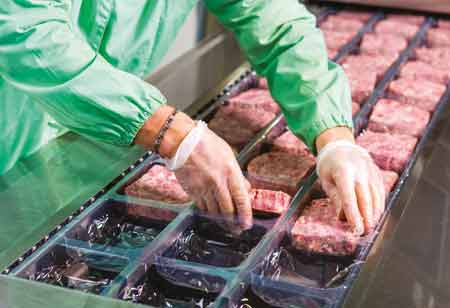Thank you for Subscribing to Food Business Review Weekly Brief
The Expanding Footprint of APACs Packaging Industry

By
Food Business Review | Tuesday, May 20, 2025
Stay ahead of the industry with exclusive feature stories on the top companies, expert insights and the latest news delivered straight to your inbox. Subscribe today.

The Asia-Pacific (APAC) region, a pivotal landscape for the food packaging supplier industry, is essential. Fueled by burgeoning populations, evolving consumer preferences, and increasing disposable incomes, the demand for sophisticated and diverse food packaging solutions continues its upward trajectory.
The Complexity of the APAC Food Packaging Market
The sheer scale and diversity of the APAC food market, which necessitates a robust and adaptable packaging supplier ecosystem, is a testament to the industry's complexity. From multinational food and beverage corporations to local producers and burgeoning small and medium-sized enterprises (SMEs), the demand for packaging spans a broad spectrum of requirements. This includes primary packaging directly containing the food product, secondary packaging for bundling and presentation, and tertiary packaging for efficient logistics and transportation.
Innovations in Materials and Sustainability
Material innovation remains a cornerstone of the food packaging supplier industry in APAC. Traditional materials such as plastics (including polyethylene terephthalate (PET), high-density polyethylene (HDPE), low-density polyethylene (LDPE), polypropylene (PP), and polystyrene (PS)), glass, metal (primarily aluminum and steel), and paperboard continue to hold significant market share. However, there is a growing emphasis on enhancing the functionality and sustainability of these materials. For instance, advancements in barrier technologies for plastic films are extending the shelf life of perishable goods and significantly reducing food waste. Similarly, lightweighting initiatives are minimizing material usage across various packaging types, contributing to resource efficiency.
Beyond conventional materials, the industry is witnessing a surge in development and adoption of innovative alternatives. Bioplastics, derived from renewable resources such as corn starch, sugarcane, and cellulose, are gaining traction as environmentally friendlier options. Compostable packaging, designed to break down in industrial or home composting environments, is also attracting increasing interest, particularly for single-use applications. Furthermore, novel materials with enhanced properties, such as antimicrobial packaging inhibiting microbial growth and active packaging interacting with food to extend freshness, are being explored and commercialized. Integrating nanotechnology also opens new avenues for creating packaging with improved barrier properties, sensing capabilities, and overall performance.
Sustainability is a critical driving force shaping APAC's food packaging supplier industry. Growing environmental awareness among consumers and stringent regulatory frameworks are compelling suppliers to prioritize eco-friendly practices throughout the packaging lifecycle. This encompasses the sourcing of raw materials, the manufacturing process, the functionality and lifespan of the packaging, and its end-of-life management. Initiatives such as the increased use of recycled content in packaging, the design of packaging for recyclability, and the development of reusable and refillable packaging systems are gaining momentum. The industry's commitment to sustainability is inspiring, and collaboration across the value chain is crucial for realizing a more circular economy for food packaging.
The structure of the food packaging supplier industry in APAC is characterized by a mix of large multinational corporations with extensive product portfolios and global reach, as well as numerous smaller, specialized players focusing on niche markets or specific packaging types. These companies often operate within complex supply chains, sourcing raw materials from various regions and supplying packaging solutions to food producers across diverse locations within APAC and beyond. The industry is also influenced by the evolving retail landscape, with the growth of e-commerce and online food delivery creating new demands for packaging that can withstand longer transit times and maintain product integrity.
The Role of Digitalization and Regulatory Compliance
Digitalization is increasingly impacting the food packaging supplier industry. Adopting advanced manufacturing technologies, such as automation and robotics, enhances efficiency and precision in packaging production. Digital printing technologies enable greater flexibility in packaging design and shorter production runs, catering to the growing demand for customized and personalized packaging. Furthermore, digital platforms facilitate better communication and collaboration between suppliers and their clients, streamlining the ordering and delivery processes. Integrating smart technologies, such as QR codes and near-field communication (NFC), into packaging also provides opportunities for enhanced consumer engagement, traceability, and anti-counterfeiting measures.
Regulatory frameworks across the APAC region play a significant role in shaping the food packaging supplier industry. Regulations about food safety, material standards, labeling requirements, and environmental sustainability vary across countries and regions. Suppliers must navigate these complex and often evolving regulatory landscapes to ensure compliance and facilitate seamless trade. There is a growing trend towards harmonizing packaging standards within regional economic blocs to promote cross-border trade and reduce regulatory burdens.
The food packaging supplier industry in APAC is characterized by continuous innovation in materials and technologies, and a diverse array of players catering to the multifaceted demands of the food market. The industry is adapting to changing consumer preferences, embracing digitalization, and navigating a complex regulatory environment. The focus on creating packaging solutions that are not only functional and appealing but also environmentally responsible will continue to drive growth and shape the future of this essential industry in the region. The ongoing pursuit of advanced materials, circular economy principles, and smart packaging technologies underscores the industry's commitment to meeting the evolving needs of the food sector and contributing to a more sustainable future.






